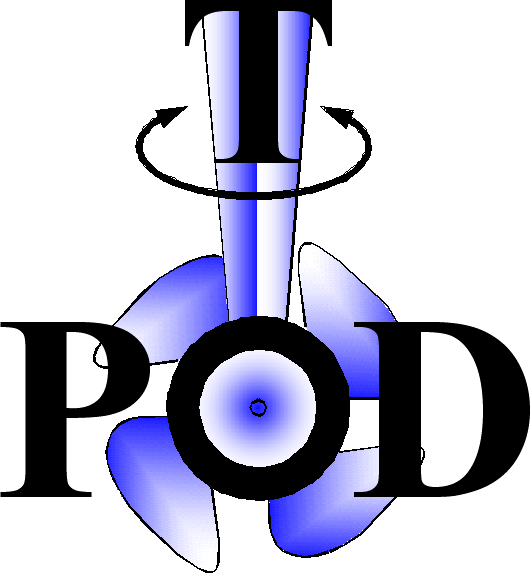


|
|
|
This paper presents preliminary results of research being conducted at MIT on the steady and unsteady dynamics of an azimuthing podded propulsor, particularly as they pertain to nonlinear vehicle maneuvering dynamics. The paper focuses on the experimental investigation of azimuthing propulsor dynamics relating to the quantification of forces of particular importance to vehicle maneuvering dynamics, as well as characterization of the dynamic vortex wake. A test matrix of quasi-steady and unsteady/dynamic tests on an azimuthing podded propulsor unit has been conducted in the MIT ship model towing tank, with variations in carriage velocity, propeller speed, motor current, motor current rate, azimuth angle and azimuth angle rate. Forces and motor current were measured for subsequent implementation of a multi-parameter dynamic azimuthing propulsor model in nfhko;]nlinear vehicle maneuvering simulations. Additional testing was conducted with the azimuthing propulsor installed in a surface vehicle attached to the Planar Motion Mechanism (PMM) in the large towing tank at the U.S. Naval Academy, where quasi-steady azimuthing propulsor effects were measured, and a full set of linear static and dynamic PMM tests were also completed. Parameterized results, as well as interesting effects and visualization of unsteady phenomenon are presented. Parametric results clearly illustrate characteristic vectored-propulsion phenomenon including significant increase in vectored thrust with azimuth angle, strong “stabilizing” normal force with propulsor azimuth, plus other important effects. Of additional note are highly unsteady wake-interaction effects seen at high azimuth angles (greater than 90 degrees), resulting in long-period oscillations in vectored thrust and torque, with amplitude as high as 50% of mean. Results will also be presented, as available, for ongoing flow visualization of the steady and unsteady vortex wake, using fluorescent paint methods in the MIT towing tank, as well as Particle Image Velocimetry (PIV) in the MIT re-circulating water channel. |
|
Send mail to
tpod@ncl.ac.uk with
questions or comments about this web site.
|